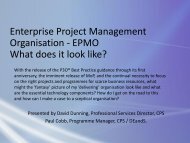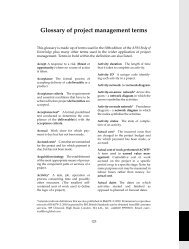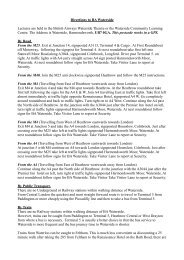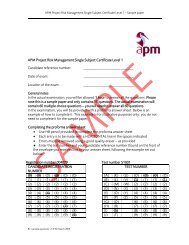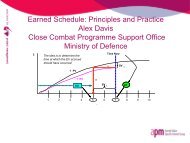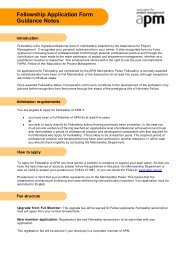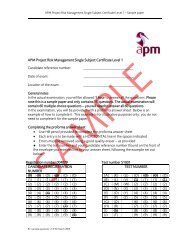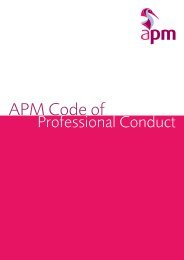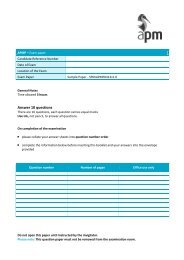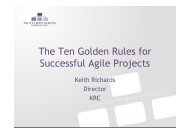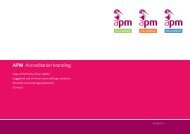apm competence framework - Association for Project Management
apm competence framework - Association for Project Management
apm competence framework - Association for Project Management
You also want an ePaper? Increase the reach of your titles
YUMPU automatically turns print PDFs into web optimized ePapers that Google loves.
Introduction<br />
Competence<br />
element code<br />
Definition from<br />
the APM BoK<br />
(5 th edition)<br />
Indicators – used<br />
to help in<br />
understanding an<br />
assessment of<br />
how the<br />
<strong>competence</strong><br />
element can be<br />
applied in a<br />
project<br />
Level of<br />
knowledge (K) and<br />
experience (E)<br />
required to<br />
achieve<br />
corresponding<br />
APM Competence<br />
Levels<br />
Technical <strong>competence</strong> domain<br />
TC 11 SCOPE MANAGEMENT<br />
Definition<br />
Scope management is the process by which the deliverables and work to<br />
produce them are identified and defined. Indentification and definition of<br />
the scope must describe what the project will include and what it will not<br />
include, i.e. what is in and out of scope.<br />
Indicators K E<br />
1 Identifies and defines interested parties’ requirements<br />
and objectives. 7 2<br />
2 Agrees appropriate deliverables with relevant stakeholders<br />
using product breakdown structure and work breakdown<br />
structure. 5 3<br />
3 Documents and agrees the project scope, and places it<br />
under configuration control. 4 2<br />
4 Updates project scope document as changes are agreed<br />
via the change control process. 5 2<br />
Total score <strong>for</strong> knowledge and experience<br />
21 9<br />
Overall knowledge and experience ratings 5 2<br />
Competence Level<br />
Scoring <strong>for</strong> APM Levels<br />
K: 8 – 10<br />
E: 7 – 10<br />
K: 7<br />
E: 5 – 6<br />
K: 6<br />
E: 4<br />
4<br />
Level A: Can successfully execute all the indicators by<br />
directing the management of complex projects and/or<br />
programmes <strong>for</strong> an organisation or a functional unit.<br />
Level B: Has successfully executed most of the<br />
indicators by managing a complex project.<br />
Level C: Has successfully executed at least some of the<br />
indicators by management of a project with limited<br />
complexity.<br />
D<br />
4<br />
Competence<br />
domain<br />
Competence<br />
element name<br />
Self-assessment<br />
scoring <strong>for</strong><br />
knowledge and<br />
experience against<br />
each indicator<br />
Total of scores <strong>for</strong><br />
knowledge and<br />
experience, divided by<br />
number of indicators<br />
(and rounded down) to<br />
give overall knowledge<br />
and experience ratings<br />
and Competence Level<br />
Derived APM<br />
Competence Level<br />
based on overall<br />
knowledge and<br />
experience ratings<br />
Description of<br />
the APM<br />
Competence<br />
Levels<br />
K: 5<br />
E: 0 – 3<br />
Level D: Has the knowledge required and may execute<br />
some of the indicators in supporting a project manager<br />
and/or project team.<br />
Figure 1.3 Self-assessment example<br />
11



